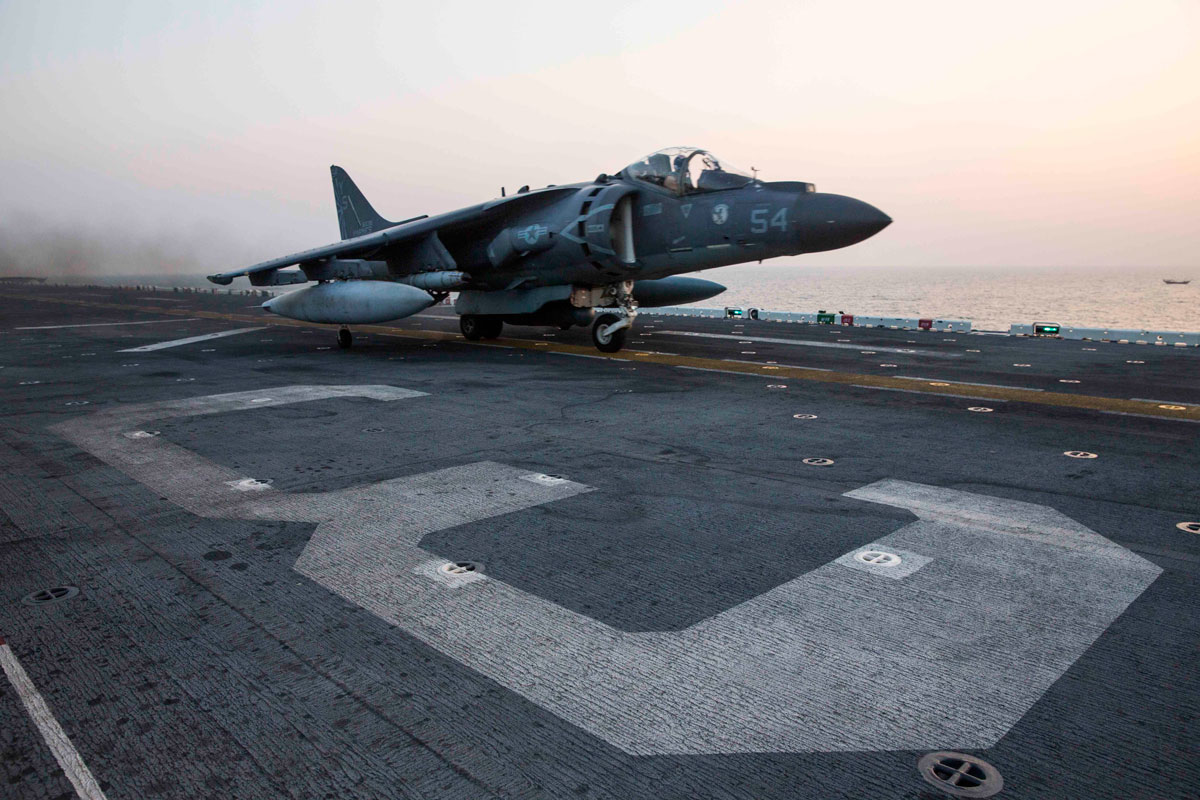Last of the (flight) line: Final pair of US Marine Corps pilots convert to the Harrier II
Two US Marine Corps pilots have become the very last to convert to the AV-8B Harrier II as the corps moves away from the aircraft for good.
One of the pair, Captain Sven Jorgensen, released GoPro footage from the cockpit of his aircraft.
Capt Jorgensen's video shows him flying the Harrier II with the AV-8B Fleet Replacement Detachment at Marine Corps Air Station Cherry Point in North Carolina.
After years of service, the US Marine Corps (USMC) is slowly retiring the AV-8B Harrier II as it aims to fully transition to the F-35 Lightning II by 2026.
The AV-8B is a second-generation US development of the original Hawker Siddeley Harrier and, in addition to the USMC, is operated by the Spanish and Italian navies.
The AV-8B made its maiden flight in November 1981 and entered service with the USMC in January 1985, replacing both the original AV-8A Harrier and A-4M Skyhawk attack aircraft.
According to the US Navy, the vertical/short take-off aircraft combines tactical mobility, responsiveness and reduced operating cost, while offering flexibility both afloat and ashore.
The latest variant features the APG-65 radar, which is also used on the F/A-18 Super Hornet, with its main roles being close air support, intermediate range interception and attack missions.

Despite an impressive service history including conflicts in Afghanistan, Iraq and Libya, the Harrier II has not been without its problems, such as a higher-than-average accident rate.
An audit report released by the Department of Defense back in 1992 found the AV-8B to have experienced up to three times as many Class A mishaps per 100,000 flight hours compared with other types.
The US Navy defines a Class A mishap as an incident where the total cost of property damage is $1m or more, where an aircraft is destroyed or missing, or a fatal injury or permanent total disability occurs with direct involvement of the aircraft.









